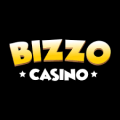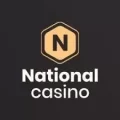Black Jack Rules
Are you ready to up your blackjack game and become a master at the table? Well, strap on your lucky charm and prepare to learn the insider secrets of this classic casino game. From basic blackjack rules to advanced strategies, this blackjack guide will be your go-to model for dominating the blackjack scene. We’ll cover everything from how to perfect your card-counting skills to how to spot a good table. This article aims to serve as your definitive guide, shedding light on the intricacies of blackjack rules in Ireland. Whether you’re a seasoned pro or a newbie just looking to learn how to play blackjack and try your hand at the game.
Are you excited to enhance your blackjack skills and become the player everyone admires? With our comprehensive guide, you’ll navigate the thrilling world of blackjack like a pro. We’ll break down not only the essential rules of the game but also the strategies that can turn the odds in your favor. Learning how to manage your bankroll and understanding the nuances of various betting options will elevate your gameplay. Plus, you’ll discover tips for finding the best tables to play, setting you up for success. Ready to level up your game? Get started with our expert insights at king-billy-australia.com and become a blackjack champion!
 Best Blackjack Casinos
Best Blackjack Casinos
1



How to Play Blackjack
Are you ready to jump into the thrilling world of blackjack online Ireland but feeling a bit lost on the rules of blackjack and where to begin? We’ll start with the basics and before you know it, you’ll be playing like a blackjack rules pro. Let’s dive in and learn all the ins and outs of this exciting game, from how to place your bets to when to hold ’em and when to fold ’em. It’s time to get your game face on and shows that dealer who’s boss!
- Stocking Up Chips: One of the black jack rules is that the game is played with chips. You can learn how to play black jack with a free online gaming version which will give you free chips for practice. This is a great way to learn casino blackjack betting rules! If you’re ready and want to play for money, you can fund your account through various secure online payment options.
- Place Your First Wager:The first step, the casino blackjack betting rules require you to place your bets in the designated circle. Each casino has its own betting rules, so watch out for minimum and maximum limits. The card values in blackjack generally remain the same with cards holding number values, royal cards worth 10 each, and Ace has a value of 1 or 11.
- The Dealer does his thing! :The Blackjack dealer, the gatekeeper of the cards, deals with style and precision. First, they’ll give each player their initial two cards, one at a time, then they’ll give themselves one card face up, the other face down. The dealer follows strict blackjack rules, like “never take a card if the hand value is 17 or more” and “take a card if the hand value is under 17”. Their face-down card, also known as the “hole” card, is the key to their strategy. If the dealer has a low-value card showing, they might just have a “soft” hand, meaning they’re more likely to hit. But if they have a high-value card showing, watch out, they might just have a “hard” hand, meaning they’re more likely to stand. The dealer knows exactly when to hit or stand in blackjack!
- Now it’s Your Time to Shine: The dealer will start the game from the left, and you will add the value of your first two cards starting from 4 to 21. Blackjack casino game rules dictate that dealers make their actions clear to the cameras when playing in person. Online, you are free to check your blackjack card value and choose your next move comfortably! You will have various options of play depending on the blackjack card values you hold. Now you can:
- – Hit: Hitting in Blackjack is like ordering a side of extra cards at the card buffet. It means you’re asking the dealer to give you another card to add to your current hand. Just like at a buffet, you have got to be careful not to overindulge, because if your hand value goes over 21, you’ll be left with a plate full of disappointment and lose the round.
- – Stand: Standing in Blackjack is like taking a stand on your current hand, you’re saying “this is my final offer” to the dealer. You’re confident with the cards you have and don’t want to risk taking another one, just like how you don’t want to risk trying the sushi at the card buffet when you’re already happy with your plate full of steak and potatoes.
- – Double Down: Doubling down in blackjack is like taking a gamble and ordering seconds at the card buffet. You’re so confident with your current hand that you’re willing to double your bet in exchange for one extra card. It’s a bold move, like taking a leap of faith and trying the spicy chicken wings, hoping it will take your hand to the next level and bring the victory home.
- – Split A Pair: Splitting a pair in blackjack rules is like having twins at the card buffet. You have two cards of the same value, and you want to play them as separate hands. It’s like ordering two plates and splitting your entrees with your friend, each of you will have a chance to order another card and try your luck. It’s a risky move, but it could pay off big time if you play your cards right.
- – Insurance: Insurance in the rules of blackjack is like a safety net at the card buffet. When the dealer’s face-up card is an ace, they might have a blackjack and you’ll have the option to buy insurance. It’s like ordering a side dish of insurance, in case the main course is not to your liking. It’s a side bet that pays 2-to-1 if the dealer does indeed have a blackjack. Just like how a side dish can be a waste of money if the main course is delicious, insurance is not always a smart move, as the odds of the dealer having a blackjack are low.
- – Surrender: Surrendering in black jack rules is like throwing in the towel at the card buffet. It’s admitting defeat and giving up on your current hand, in exchange for half of your initial bet back. It’s like sending your plate back to the kitchen when you realize the dish you ordered is not to your liking.

- VIP Club
- Cryptocurrency accepted
- Licensed by MGA

- VIP Program
- 24/7 Customer Service
- Easy and Fast Deposits

- 1-2 days Payout
- Cryptocurrency Accepted
- Top Mobile Casino
Mastering the Deck
A Blackjack deck is like a magic box full of cards, specially designed for this game. Card values in blackjack are spread across the six, 52-card packs, shuffled for the game. Black jack rules dictate, no jokers, with each blackjack card value being specific. The dealer will take the deck and shuffle it, like a magician performing a card trick, to ensure a random order of cards. They will typically shuffle the deck after a certain number of rounds or when the deck is depleted, it’s like a reset button for the blackjack casino game rules. The dealer will then deal the cards, and the game begins, as players try to make the best hand possible without going over 21.
Value of the Cards in the Deck
The card values in blackjack are set according to the number or symbol represented on the card.
2 – 10 retain their numerical values while the other cards are valued as seen below:
| Card: | Value: |
|---|---|
| Jack | 10 |
| Queen | 10 |
| King | 10 |
| Ace | 1 or 11 |
Ace can be used at each value point, the choice is yours unless it forces your hand over 21! In which case the blackjack rules state that the card value is one!
The Value of Your Chips
In most casinos, the value used for blackjack will be clearly marked on the chip itself, and will typically come in a variety of denominations, such as €1, €5, €25, €100, and so on. The value of the chips can vary depending on the blackjack real money casino and the type of game being played. In some cases, the chips may have a fixed value, such as €5 or €25, while in other cases, the chips may be used as “cashless” tokens that can be exchanged for cash at the casino cage or at a designated chip redemption booth.
The Blackjack Table
Blackjack tables, whether online or in person, are like the battlefields of the card game world. The physical tables are usually green felt with a designated betting area, and often have space for several players. Online tables look similar, with a virtual green felt, betting chips, and card animations. But the real magic happens when the cards are dealt, and players make their bets, it’s like watching a high-stakes game of chess.
Hard vs Soft Hand
A “hard” hand in blackjack rules is like a rock, solid and unchangeable. While a “soft” hand is like a marshmallow, fluffy and mouldable. In black jack rules terms, a hard hand refers to a hand that does not have an Ace or a hand in which the Ace is counted as 1 instead of 11. For example, if you have an 8 and a 6, you have a hard 14. A “soft” hand, on the other hand, is a hand that contains an Ace that can be counted as 11 without going over 21. For example, if you have an Ace and a 4, you have a soft 15. Knowing the difference between hard and soft hands can help you make decisions about when to hit or stand in blackjack.
Rule Variations in Blackjack
Each game can be unique and each casino blackjack betting rules can differ. Here are a few variations in the game:
Number of decks in play
The number of decks in play in blackjack can be like adding or subtracting spices in a dish. The more decks in play, the lower the player’s chances of winning. A single-deck game has a slightly better advantage for the player than a game using six decks. With fewer decks, there are fewer cards in play, so it’s easier to keep track of what cards have been dealt and what cards remain. Blackjack rules argue for two to eight decks as one gives the player an added advantage. Additionally, in some casinos games like “Blackjack Switch” or “Spanish 21” the number of decks in play can be different and it can change the rules and options of the game, like allowing players to switch cards between hands or allowing players to hit on a hand of 21.
Dealer’s Soft 17
A “soft 17” in blackjack is when the dealer has an Ace and a 6, giving them the flexibility to count the Ace as a 1 or an 11. It’s like the dealer has a “get out of jail free” card because they have more options and can avoid going bust. Think of it as a “semi-strong” hand for the dealer.
Doubling
Doubling” in blackjack is like taking a “power-up” in a video game. You’re essentially saying, “I have a feeling that my hand is going to be a winner. So, I’m willing to bet twice as much to increase my chances of getting a big payout.” It’s like giving your hand a “turbo boost” to try and beat the dealer. Just make sure you have a good hand before you hit the “double” button!
Doubling After Split
Doubling down on your luck, like splitting aces at the casino and betting big on the next card to make your winnings double in a flash! Check the blackjack casino game rules to see if this is available when playing.
Re-splitting
Re-splitting is like getting a “mulligan” in golf, but at the blackjack table. You get to take another crack at splitting your cards again in the hopes of hitting that perfect hand! If you learn how to play black jack you will know when this is the best option.
Surrendering
Surrendering in blackjack is like using your “get out of jail free” card. It’s a way to bail out of a bad hand before it gets worse. But, the rules of blackjack state, you’ll have to give up half your bet to do it.
Dealer Peek
“Dealer peak” is like a sneak peek into the future. The dealer takes a quick peek at their facedown card values in blackjack, to see if they have a blackjack before the players have a chance to make their decisions. Kind of like a fortune teller taking a quick glance at the crystal ball before making predictions. If the dealer has an Ace face up and he peaks and sees a 10 on the facedown card, he now knows that he has a blackjack. He’ll collect the losing bets and pay out the winning ones right away instead of playing the round out.
Payouts in Blackjack
Payouts in blackjack are like the treasure at the end of a treasure hunt and should serve as your blackjack guide. The more you wager, the more treasure you can potentially win. But the odds of finding that treasure are affected by the RTP rate. If you learn how to play blackjack with a strategy you now have a 50/50 chance. It’s like searching for a treasure chest with a map that has a higher or lower chance of leading you to the treasure. Even if you don’t find the treasure, you have a fun adventure along the way!
Blackjack Terminology
There are many fun and interesting terms used when learning how to play blackjack. You should familiarize yourself with them, so you know what everyone is so excited about.
| Term: | Meaning: |
|---|---|
| 3:2 Blackjack | Your payout is in a ratio of 3:2. E.g. Bet $100, land blackjack, win $150! |
| 6:5 Blackjack | Your payout is in a ratio of 6:5. E.g. Bet $100, land blackjack, win $120! |
| Basic Strategy Chart | A chart utilized as a blackjack guide for the options that players have. |
| Busting | Oops, you are holding a card value over 21! You have now lost your bet. |
| Counting Cards | This may sound like a pro-strategy where you memorize the deck, but its not! You’re working on the odds of cards left in the deck. Above 6 are good, below are bad. |
| Double Down | Double your bet for one more card. Just one, so be careful! |
| Face Down | The dealer is hiding one of his cards, so no-one knows what he has! It’s on the table but face down. |
| Face Up | One of the dealer’s cards are face up, so you have a better idea of your odds. |
| Hole Card | This is what you call the dealer’s card that is hidden or face down. |
| Insurance | This is a fuzzy play, where you bet on if the dealer has blackjack or not. May pay off, may not! |
| Shoe | That little box that holds the cards. This is what we call it. |
| Surrender | If it looks like you are losing and you want to salvage something, this is your move! You opt out of the session but keep half your bet. |
| Third Base | This is the name for the far-left player on the dealer’s side. He/she plays last. |
The History of Blackjack
Blackjack, also known as 21, has a storied history that dates back to the 1700s. The exact origins of the game are up for debate. But it is believed to have been influenced by a variety of games from different cultures, including French chemin de fer and Spanish 21. The game first became popular in the United States in the early 1900s, particularly in the western states where it was played in saloons and casinos.
One of the things that made blackjack so appealing was that it offered players the chance to beat the house using blackjack strategy and skill, rather than just luck. This attracted a lot of smart, savvy players who were looking for a new challenge. During World War II, many soldiers learned blackjack how to play while stationed in Europe and brought the game back to the States with them, further popularizing it.
Blackjack also gained popularity due to its association with the glamorous, high-stakes world of casinos and the glitz and glamour of Las Vegas. During the 1950s and 60s, the game was featured in countless movies and TV shows, further cementing its place in popular culture.